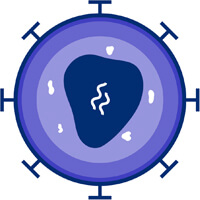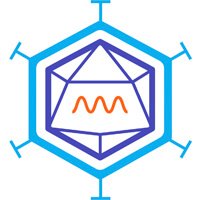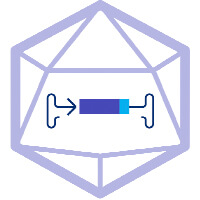Exploring the Building Blocks of Vector Design
Welcome to Gene Therapy Science / Vector Design
There are two main groups of gene therapy vectors: viral vectors and non-viral vectors. The application of non-viral vectors has been very limited to date due to poor efficiency of gene delivery.5 The success of gene therapy therefore depends on effective vehicles for gene transfer that are based on recombinant viral sequences, but are not viruses themselves.1
There are four main viral vector groups currently under investigation for gene therapy:
| Image | Vector | Genetic Material | Packaging Capacity | Tropism | Vector Genome Forms | Select Limitations | Select Advantages |
|---|---|---|---|---|---|---|---|
 |
Gamma –
retrovirus 6,7 |
RNA 6 | 8 kb 6 | Dividing cells only 6 | Integrated 6 | Only transduces dividing cells and integration into the host genome occurs at random sites 6 |
Persistent gene transfer in dividing cells 6 |
 |
Lentivirus 6 | RNA 6 | 8 kb 6 | Broad (dividing and non-dividing cells) 6 | Integrated 6 | Random integration may cause potential complications 6 | Persistent gene transfer in most tissue 6 |
 |
Adenovirus 6 | Double-stranded DNA 6 |
Replication defective: 8 kb 6 Helper-dependent: 30 kb 6 |
Broad (dividing and non-dividing cells) 6 | Episomal 6 | Capsid mediates a potent inflammatory response 6 | Extremely efficient transduction of most tissues 6 |
 |
Recombinant adeno-associated virus 6 | Single-stranded DNA 6 | <5 kb 6 | Broad (dividing and non-dividing cells) 6 | Predominantly episomal. Random integration events observed with a low frequency (0.1–1% of transduction events) 8 | Small packaging capacity 6 | Non-inflammatory; non-pathogenic 6 |
Key properties of the four main vector groups currently under investigation for use in gene therapies. Table developed from Thomas CE, et al. 2003,6 Maetzig T, et al. 20117 and Colella P, et al. 2018.8
rAAV vectors are used in approved gene therapies and are being utilized for hemophilia gene therapies currently under investigation.3,9 Several unique characteristics of AAV make it amenable as a platform for the in vivo delivery of gene therapies,9 including:
Wild-type AAV is a single-stranded parvovirus requiring co-infection with a helper virus to facilitate productive infection. AAV comprises a protein shell that surrounds and protects the single-stranded DNA of approximately 4.8 kb.11 This DNA includes open reading frames (ORFs) encoding a promoter, replication and capsid proteins (via the rep and cap genes), flanked by two inverted terminal repeat (ITR) elements.11
rAAV differs from wild-type AAV in that it lacks the viral rep and cap genes.11 Instead, the AAV expression cassette may include gene regulatory elements such as the promoter, the transgene and a transcription terminator (polyadenylation A tail [Poly(A)]).8 rAAV is essentially a protein-based nanoparticle that has been engineered to cross the cell membrane and deliver the transgene to the cell nucleus. 11 Only the ITRs remain from the wild-type AAV, and are necessary for the proper packaging of the expression cassette into the rAAV.8,9 The rep and cap sequences are provided separately during production to prevent the generation of wild-type AAV. In the absence of the rep gene within rAAV, the ITR-flanked transgenes can form circular episomal DNA in the nucleus11 (i.e. the rAAV vectors do not have the ability to integrate site-specifically into chromosome 19).12
When developing rAAV vectors for gene transfer, there are several aspects to consider: packaging limitation, seropositivity, immune response and transduction efficiency.11
To optimize rAAV gene transfer and overcome the limitations of this platform, the rAAV capsid can be engineered to enhance transduction, increase tropism and evade the host immune response.11 There are currently four main approaches used to engineer and optimize the rAAV capsid:
Related Content